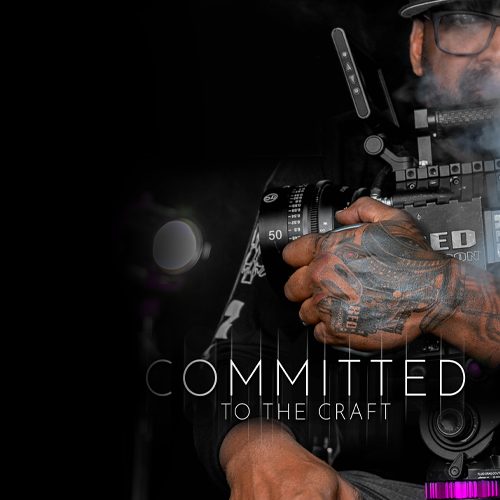
Guide To Film Production Positions and Their Film Production Roles
“The Line” refers to the distinction between the above the line crew and below the line crew in film production. Above the line crew refers to the key individuals who have a significant creative or financial influence on the project, while below the line crew includes the various departments that support the production process.
Above the Line Crew:
-
The Director:
The director is responsible for overseeing the creative aspects of the film, including guiding the actors, making artistic decisions, and ensuring the vision of the project is realized.
-
The Producer:
Producers are involved in all aspects of the film production, from the initial idea to the final product. They handle the business and logistics of the project, including securing funding, hiring crew members, and managing the production timeline.
-
The Executive Producer:
The executive producer is usually responsible for providing financial support for the film and may also have creative input and decision-making authority.
-
The Principal Cast:
This refers to the main actors who portray the leading characters in the film.
-
The Casting Director:
The casting director is responsible for finding and selecting actors for the various roles in the film. They work closely with the director to find the right talent that aligns with the project’s vision.
Below the Line Crew:
-
 The AD Department:
The AD Department:The assistant director (AD) department assists the director in managing the production process. This includes scheduling, coordinating with other departments, and ensuring the smooth running of the set.
– 1st AD: The first assistant director assists the director in planning and executing the shooting schedule.
– 2nd AD: The second assistant director assists the 1st AD in the coordination of the cast and crew.
– 2nd 2nd AD: The second second assistant director assists the 2nd AD in various tasks, including crowd control and paperwork.
– Set PA: The set production assistant assists the AD department with various tasks on set, such as distributing paperwork and managing communication.
-
 The Art Department:
The Art Department:The art department is responsible for the visual and aesthetic aspects of the film.
– Production Designer: The production designer oversees the overall visual concept and design of the film.
– Art Director: The art director works closely with the production designer to execute the visual concept, including overseeing the set construction and design.
– Set Dresser: Set dressers are responsible for arranging and decorating the sets to achieve the desired look.
– Prop Master: The prop master is in charge of acquiring and managing all the props used in the film.
– The Art PA: The art production assistant provides support to the art department with various tasks, such as organizing supplies and assisting with set decoration.
– Set Decorators: Set decorators work closely with the production designer and art director to select and place furniture, artwork, and other decorative elements on set.
-
 The Camera Department:
The Camera Department:The camera department handles all aspects of capturing the visuals for the film.
– Director of Photography: The director of photography (DP) is in charge of the camera and lighting crews. They work closely with the director to achieve the desired visual style.
– Camera Operator: The camera operator operates the camera during filming, following the instructions of the DP and director.
– 1st AC: The first assistant camera (1st AC) is responsible for maintaining the camera and assisting the DP and camera operator.
– 2nd AC: The second assistant camera (2nd AC) assists the 1st AC with camera-related tasks, including loading film or memory cards and marking scenes.
– DIT: The digital imaging technician (DIT) manages the digital files and ensures the quality and integrity of the footage.
-
 The Electric Department:
The Electric Department:The electric department handles the lighting setup and operation.
– Gaffer: The gaffer is the head of the electric department and is responsible for designing and executing the lighting plan.
– Best Boy Electric: The best boy electric assists the gaffer in managing the electric department.
– ELT: The electrician (ELT) works under the gaffer and best boy electric, helping with lighting setup and maintenance.
– Swing: The swing electrician is responsible for assisting the electric department with various tasks, including running cables and setting up lights.
– Generator Operator: The generator operator is in charge of managing the power supply on set.
-
 The Grip Department:
The Grip Department:The grip department supports the camera and lighting crews by providing support and stabilization equipment.
– Key Grip: The key grip is the head of the grip department and is responsible for the setup and operation of grip equipment.
– Best Boy Grip: The best boy grip assists the key grip in managing the grip department.
– Grip: Grips assist with the setup and operation of grip equipment, including rigging and moving heavy objects.
– Dolly Grip: The dolly grip operates and maintains the camera dolly, a specialized wheeled platform used for smooth camera movements.
-
 The Hair & Make-Up Departments:
The Hair & Make-Up Departments:
The Hair & Make-Up departments are responsible for the appearance of the actors, ensuring they look their best and accurately portray their characters. The roles within this department include:
– Key Make-Up Artist: The key make-up artist is in charge of designing and applying makeup to the actors, working closely with the director and costume designer to achieve the desired look.
– Key Hair Stylist: The key hair stylist creates and maintains hairstyles for the actors, ensuring consistency throughout the production.
– Make-Up and/or Hair Assistants: These assistants support the key artists by helping with various tasks, such as preparing materials, styling hair, and applying makeup.
– Special Effects Make-Up Artist: The special effects make-up artist specializes in creating realistic and believable effects, such as wounds, prosthetics, or creature designs.
-
The Wardrobe Department:
The Wardrobe department is responsible for the costumes and overall appearance of the actors. The roles within this department include:
– Costume Designer: The costume designer collaborates with the director and production designer to create costumes that reflect the characters and enhance the storytelling.
– Wardrobe Supervisor: The wardrobe supervisor oversees the day-to-day operations of the wardrobe department, ensuring costumes are properly maintained, fitted, and organized.
– Set Costumer: Set costumers assist the wardrobe department by dressing the actors on set, making sure they are in the proper costumes for each scene.
– Costume Coordinator: The costume coordinator assists the costume designer and wardrobe supervisor with various tasks, including organizing fittings, managing budgets, and coordinating costume transportation.
– Tailor: Tailors are responsible for alterations and modifications to costumes, ensuring a perfect fit for each actor.
– Shopper: The shopper is responsible for sourcing and purchasing the costumes and accessories needed for the production.
-
 The Sound Department:
The Sound Department:
The Sound department is responsible for capturing high-quality audio during filming. The roles within this department include:
– The Production Sound Mixer: The production sound mixer is in charge of recording the dialogue and ambient sounds on set, using microphones and other audio equipment.
– The Boom Operator: The boom operator is responsible for holding and positioning the boom microphone, capturing clear and balanced sound while staying out of the frame.
– The Sound Assistant/Cable person: The sound assistant helps with various tasks, such as setting up and maintaining audio equipment, running cables, and assisting the sound mixer and boom operator.
-
The Craft Service & Catering Departments:
The Craft Service and Catering departments are responsible for providing food and beverages to the cast and crew, ensuring they are well-nourished and energized throughout the production.
-
The Stunts Department:
The Stunts department handles all the action sequences and stunts required in the film. The roles within this department include:
– Stunt Coordinator: The stunt coordinator is responsible for planning and coordinating all the stunts in the film, ensuring safety and executing thrilling action sequences.
– Stunt Performer: Stunt performers are highly skilled individuals who perform the stunts on behalf of the actors, ensuring their safety and delivering exciting performances.
– Set Medic: The set medic is a trained medical professional who is present on set to provide immediate medical assistance in case of injuries or emergencies.
-
The VFX Department:
The VFX (Visual Effects) department deals with the creation and integration of digital effects into the film. The roles within this department include:
– VFX Supervisor: The VFX supervisor oversees the entire visual effects process, working closely with the director and production team to achieve the desired visual effects.
– VFX Coordinator: The VFX coordinator assists the supervisor in coordinating and managing the visual effects workflow, including scheduling, budgeting, and communication with other departments.
-
 The Production Department:
The Production Department:
The Production department handles the logistics and administrative aspects of the film production. The roles within this department include:
– The Line Producer: The line producer is responsible for managing the budget and overseeing the day-to-day operations of the production.
– The UPM (Unit Production Manager): The UPM assists the line producer in managing the production, handling logistics, and ensuring the smooth running of the set.
– The Production Coordinator: The production coordinator provides support to the production department, managing paperwork, scheduling, and communication between departments.
– The Set Accountant: The set accountant handles the financial aspects of the production, including budgeting, payroll, and managing expenses.
– Office PA: The office production assistant provides administrative support to the production team, assisting with paperwork, scheduling, and general office tasks.
NARRATIVE FILM REEL
GLOBAL FILMZ EVOLUTION (2017 – 2022) REEL
MUSIC VIDEO PRODUCTION
MUSICAL ARTISTS LOOKING TO PRODUCE A MUSIC VIDEO? WE ARE A MIAMI BASED FULL SERVICE VIDEO PRODUCTION COMPANY, EQUIPPED WITH STATE OF THE ART SMART STUDIO / FILM SETS WHICH ARE PERFECT FOR CREATING A CONTROLLED ENVIRONMENT WHEN NECESSARY OR OUR FILM CREW CAN TAKE THE PRODUCTION TO THE STREETS/BEACHES OF MIAMI.
More Music Videos…(Click here)
Corporate Video Production
IN NEED OF PROMOTIONAL VIDEOS FOR YOUR BUSINESS? WE CAN HELP YOU SHAPE YOUR DIGITAL MARKETING STRATEGY BY INTEGRATING HIGH QUALITY, PROFESSIONAL CORPORATE VIDEOS.
More Corporate Videos…(Click here)
TV SHOW PRODUCTIONS
SITCOMS
DOCU-SERIES
HIDDEN CAMERA SHOWS
Behind the Scenes
More Behind the Scenes…(Click here)




 The AD Department:
The AD Department: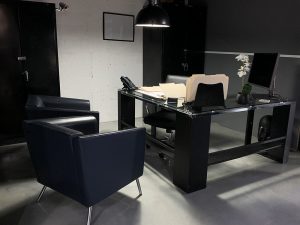 The Art Department:
The Art Department: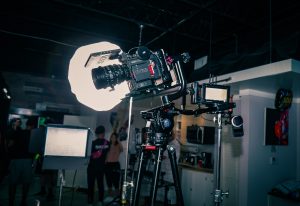 The Camera Department:
The Camera Department: The Electric Department:
The Electric Department: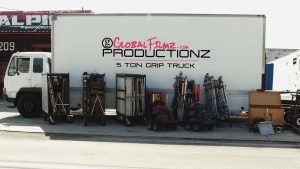 The Grip Department:
The Grip Department: The Hair & Make-Up Departments:
The Hair & Make-Up Departments: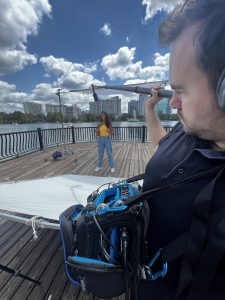 The Sound Department:
The Sound Department: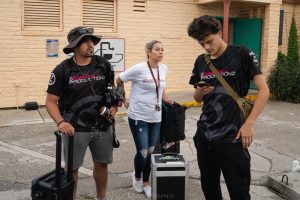 The Production Department:
The Production Department: